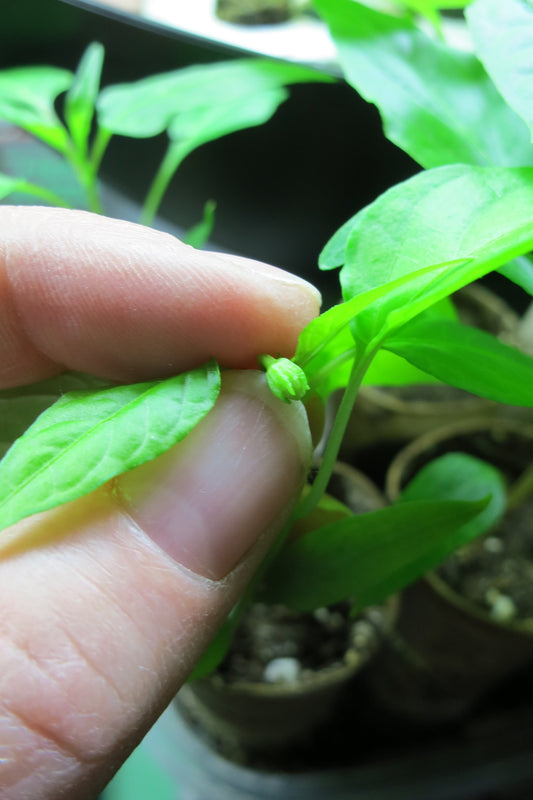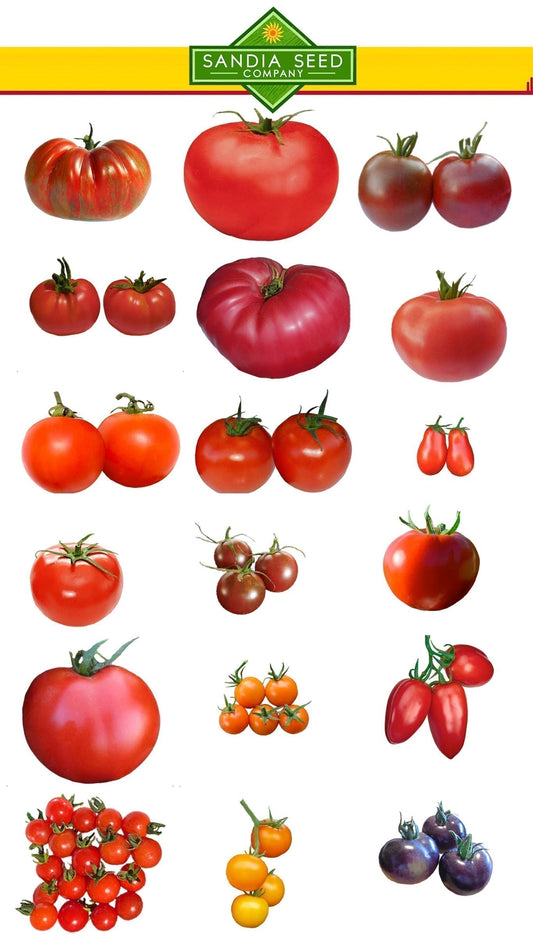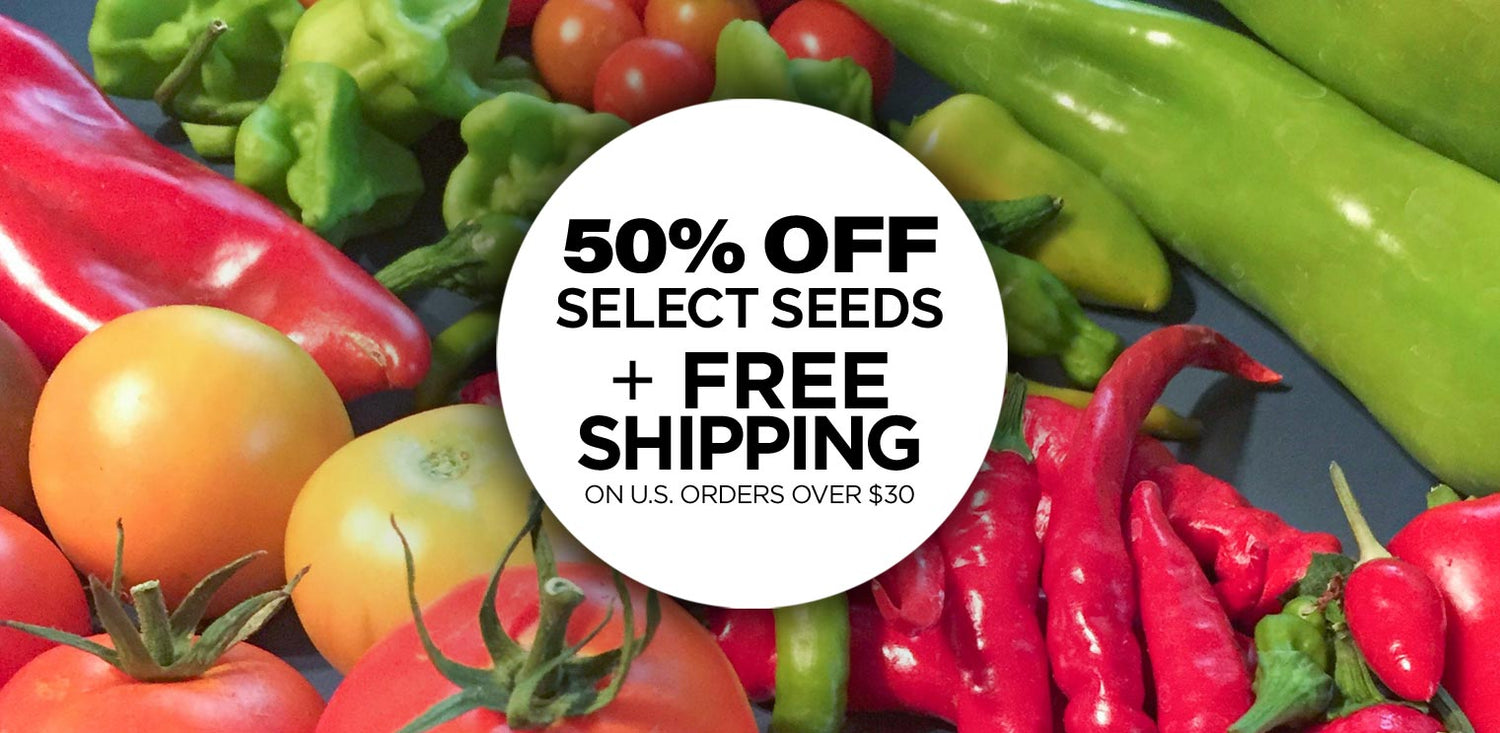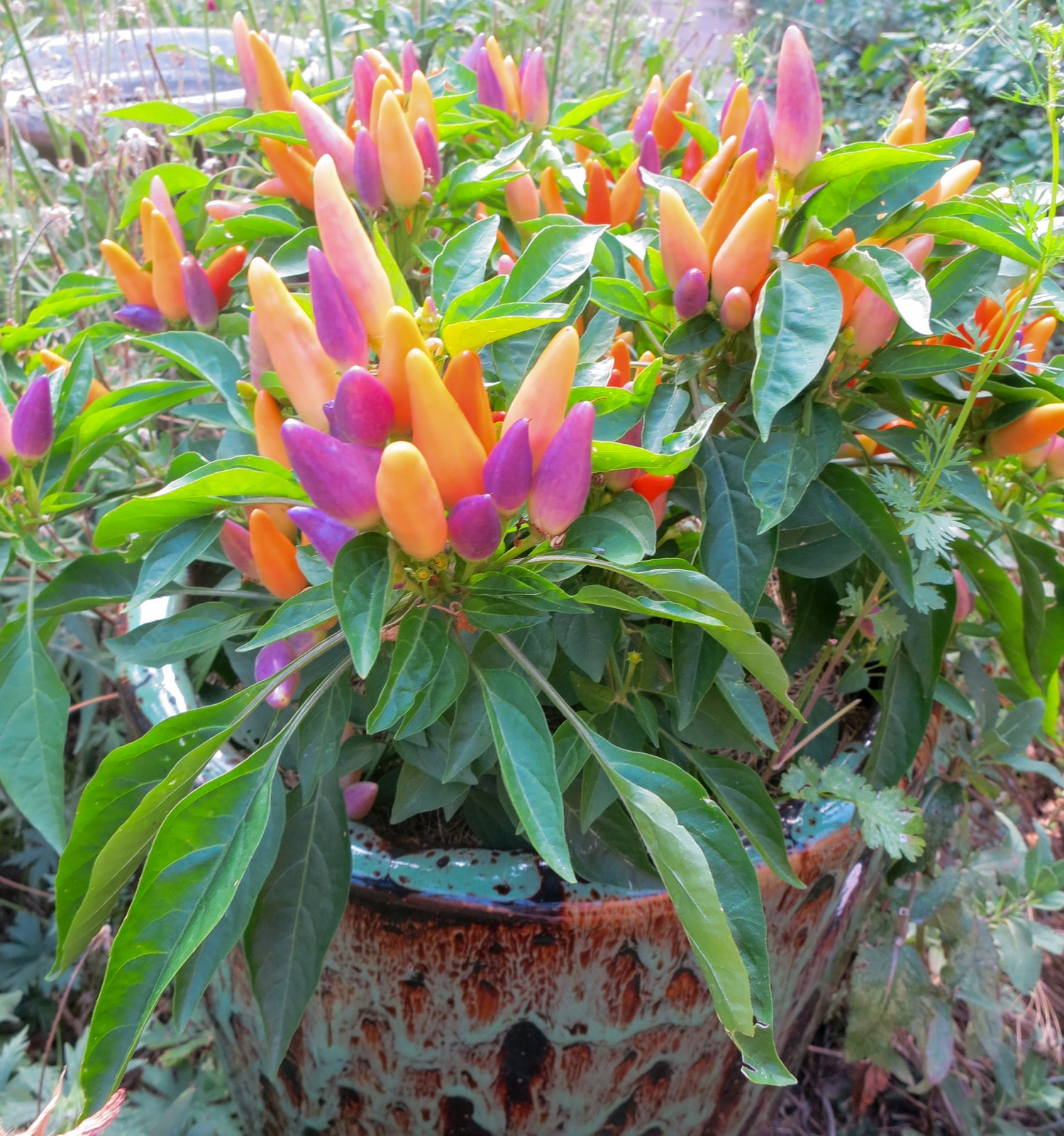
Here are our top tips for growing jalapeño seeds:

1. Use Fresh Jalapeno Seeds
When perfectly stored, jalapeno seeds can be viable for 25+ years, but realistically they'll last about 2-5 years with the best germination rates. Older seeds won't have as good of germination but that doesn't mean you can't use them, if they germinate you're off to the jalapeno races. Store jalapeno seeds in a cool, dark, dry environment to help them last longer.

2. Keep Jalapeno Seeds Warm for best Germination:
Keeping your jalapeno seeds moist and warm at around 80-90˚ F is ideal for the fastest and most successful germination. We usually use a seedling heat mat to keep them temperature nice and warm, and stop using the heat mat once all the seeds have sprouted. Young pepper seedlings do fine at temperatures around 70˚ F so you don't have to keep using the heat mat if desired to save energy! Make sure to thin out the seedlings, you only want to have one jalapeno seedling per pot/pod.

3. Be patient with Jalapeno Seeds!
Most jalapeno seeds are quite fast to germinate, as with other fast growing peppers, they can take 7-10+ days. This is even when kept warm, and if they take longer than 10 days, don't give up on them, sometimes they take their sweet ol' time.

4. Start Jalapeno Seeds indoors 6-8 weeks before the last frost date.
Jalapeno pepper plants like warm weather, so keeping them indoors until it's warmed up to about 60˚ F consistently at night is important. Peppers are very frost sensitive and get stunted in temperatures below 50˚ F or in cold soil, they like warm roots! Growing peppers in pots is great for shorter seasons as you can move them to a sheltered location if needed during a late frost in spring or an early frost in the fall.

Experienced and inexperienced both have made the mistake of overwatering jalapeno plants. Remember, peppers suffer greatly with constantly wet, soggy roots. Make sure to have well-draining soil, and let the soil dry out a bit between watering your pepper plants. If you notice drooping, yellow leaves on your jalapeno pepper plants, this is often a sign that the soil is too soggy, check the soil before watering and only water when needed.

If you pinch off the first few blossoms you see on your young jalapeno plants, they'll put more energy into growing bigger so you'll have more pods later.
7. Movement is important for healthy Jalapeno seedlings!
Encourage your pepper seedlings to grow stronger and stockier with movement - you can brush or gently pat the seedlings regularly, or add a fan for a light breeze on the peppers. This movement and air circulation helps prevent damping off, a common ailment of seedlings that causes them to wither and die after sprouting – and it encourages them to grow stockier and not so leggy.
Learn more about Weak Pepper Seedlings »

8. Harden Off Jalapeno Pepper Plants before planting outdoors.
Indoor started pepper plants need to acclimate the outdoor weather, sun, and breezes – so first put them outside for a few hours in the shade, then move them into dappled shade, and over a few days let them sit in the sun for a few hours until you work up to a full day of sun. This will prevent them from getting sunburned and shocked by the outdoor conditions and they'll be much happier transplants.
Learn more about Hardening Off Seedlings »

9. Plant Jalapeno plants in Full Sun!
Make sure your jalapeno pepper plants get at least 6-8 hours of sunlight for the best production of peppers. Peppers also can do well with some dappled shade for part of the day, as long as they get 6-8 hours of good sunlight.

10. Don't Over-fertilize Jalapeno Plants with Nitrogen:
Jalapeno pepper plants are light feeders, but will benefit from a regular feeding of a well-balanced, organic fertilizer or compost tea. Adding homemade compost is also highly recommended to provide slow-release natural nutrients. Avoid using high nitrogen fertilizers later in the season, which will result in bushy plants, but very few peppers.
11. Plant Lots of Flowers Near Your Jalapeno Pepper Garden
Wondering why your pepper plants have flowers but no peppers? While peppers can self-pollinate with the wind, pollinators can really help increase the production of jalapenos. Attract pollinator bees and beneficial insects by growing lots of natives flowers around your pepper garden, and never use pesticides.
Note: There are also other reasons that peppers have flowers but no peppers such as extreme temperatures.
Learn more about Pepper Pollination »
12. When to Pick Jalapeno Peppers
Many jalapenos are harvested at an immature green stage, though most jalapeno varieties will eventually mature to red – there are also purple, orange and yellow jalapenos! View all of our jalapeno seeds. Green jalapenos are good and a classic way to enjoy these tasty pods, but once they turn to their final color their flavor gets even better. We encourage you to taste one jalapeno pepper, if it still tastes green, let it ripen for another week or so before trying another pepper for the desired ripeness and flavor. The longer they ripen, the more flavor they will pack!
Learn more about When to Pick Peppers »
How To Grow Peppers »
Growing jalapeno peppers from seed is the best way to enjoy them all the time! You can pickle them to preserve for the winter months, and pop them into salsas, roast them, top tacos, throw into stews, make jalapeno hot sauce, you name it!

Grow jalapeno peppers in pots!
Peppers grow wonderfully in containers. One great reason to grow peppers in pots is that they are cold-sensitive plants, so if you have a late spring frost or an early autumn frost, you can bring in your potted pepper plants to a warm sheltered location to keep them from being frozen.
Here are some of the best peppers to grow in pots.























